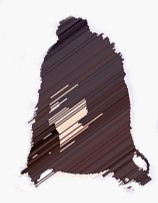#TAKEUSANYWHERE
"You're not actually ever lost; you just don't know which direction to go."
Kale felt like a real-life L.B. Jeffries1. Bound by the unseen receivers placed at the end of his mother’s lawn, it was looking to be a real shady summer. He valued freedom and Xbox Live and music and would soon see all three be placed beyond his reach. It’s hard to truly see the world when you’re just a high schooler, but it’s even harder with a court-ordered ankle monitor on. It’s 2007 and Kale isn’t a terribly exciting or challenging persona. Ankle monitors usually come with a more exciting story, but here it’s too domestic. We’ve seen it and heard it before, and even a basic mystery can’t hold our attention for 105 minutes. There’s a killer next door, bodies in the garage, but nobody really gives a damn.
⃢⃢⃢⃢⃢
The Artist sat in a chair, just like you or I would. He was ready for a one-sided conversation or encounter, the kind many of us try very hard to avoid. What would be spoken at him? Done to him? Mostly, he’s just staring at reflections of himself.
This display was egotistical the way all art is, but reputations have the pesky habit of preceding some people more than others, and in this case such an ingrained boastfulness was inextricable from the Artist. From what we in the non-LA part of the country know, it was painful, and it was derivative at best. There were connections made in the harshest and most inimitable ways, and there were some visits that were...well, practically nothing. It’s listed as the first project the Artist really undertook, and it shows. It was raw and simplistic, but what too many people forget: we all have to start somewhere.
⃢⃢⃢⃢⃢
Sam is unique in the way boring people are, which is to say he’s not unique at all. His grandfather (or was it his great-grandfather?) was unique. An explorer. Sam is a high schooler played by a twenty-year-old with a crush and a new car. The Camaro is rusty, but that’s necessary. It’s a gateway to a gateway that eventually bought four sequels. But Sam isn’t that exciting. Sam just loves gadgets and girls and driving around with gadgets and girls. Sam isn’t nobody, but he’s pretty close. Sam is a descendant of someone more important.
For us, it’s boring. For the Artist, it’s boring.
⃢⃢⃢⃢⃢
It’s a retrospective of the most painful, pleasurable, and delightful sort. It will take something like seventy-two hours, and it will proceed from the last to the first, just as it has to.
Many call it self-indulgent, which of course it is (again), but this time it’s too human to dismiss outright. If this was the first time you’ve seen the Artist perform off-screen, you’d fall in this camp. He’s surrounded by admirers from Brooklyn (probably); he’s sleeping and eating and burping (and laughing) and we’re seeing it all. Or at least some of us are, those tuning in on our second screens. In the most democratic form of entertainment, we all at least have the ability to watch the Artist’s retrospective. Livestream, browser feed, Twitter-aflutter, the Artist took over a weird subset of live culture for three random days. What it felt like to be a part of it.
(Were we really a part of it, those of us in other parts of the country, watching a live feed?)
(Who gets to judge that?)
(Does it matter?)
⃢⃢⃢⃢⃢
Stanley is a descendant, just like Sam. His destiny is written (quite literally, by a man named Louis), and also tied in with a camp buddy, someone he befriends out of compassion and a novel sense of relatability. This would serve him, and almost everyone else, in the long run. Who knew the Artist’s first leading role would be one of the most pure hints of artistry we’d see? I don’t know if we’ve seen it since.
⃢⃢⃢⃢⃢
The Artist was stranded in Colorado with two other friends2. Of his own volition, yes, but still precisely at 40°14'45"N 105°32'06"W, in what Google Earth would show is a cottage with a brown roof. He’s a white dot, soon a white line, which will dash east before north before east again. It’s thrilling.
By June 23rd, a month after leaving the Rocky Mountain State, the trio (and whoever was driving them) were in Alaska of all places, having left the contiguous United States for the Great White North. They’re on a beach3, staring the end of another project and another day, which are one in the same. The wake behind them is little known to those not actively seeking it, but is nonetheless important. Those who followed their stops floated on updates, on coordinates, on hope. In a world where everyone explains everything, these three left no commentary, no analysis. We all trekked with belief and desire.
Selfies, that currency overlooked by the cynical and slightly older, were the trip loglines, like a visual, digital journal left behind by Louis and Clark. On Facebook, local news stories, Twitter (always Twitter), pictures of the Artist with several locals were uploaded daily, along with coordinates taken at noon. Sometimes smiles, others confused grins and grimaces. Who is this former child star standing in my restaurant? My front porch? A parking lot in Louisiana? Is this a stunt, or a riddle? A film or a product launch? What am I seeing (and what am I missing?)?
This is connection through art, through a process of extended introspection, through the type of travel and trials most of us can’t afford. Some will find it dumb, or dangerous, or overly dramatic. It’s easy to be cynical; it’s not a new genre of art, but it’s one which hasn’t found its public legs, and the Artist has taken his sweet time finding his as well.
But it is my humble opinion that he’s found it.







